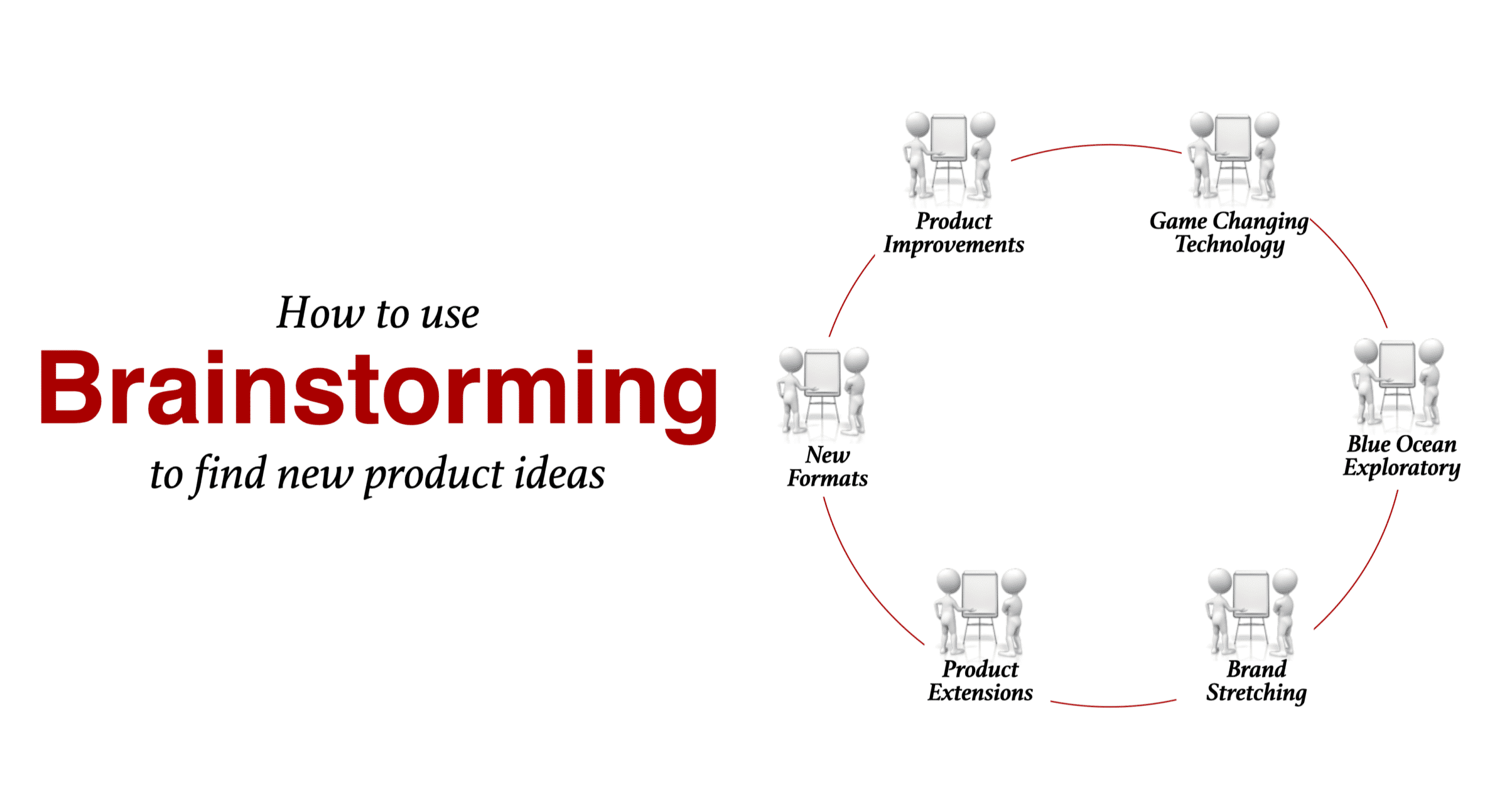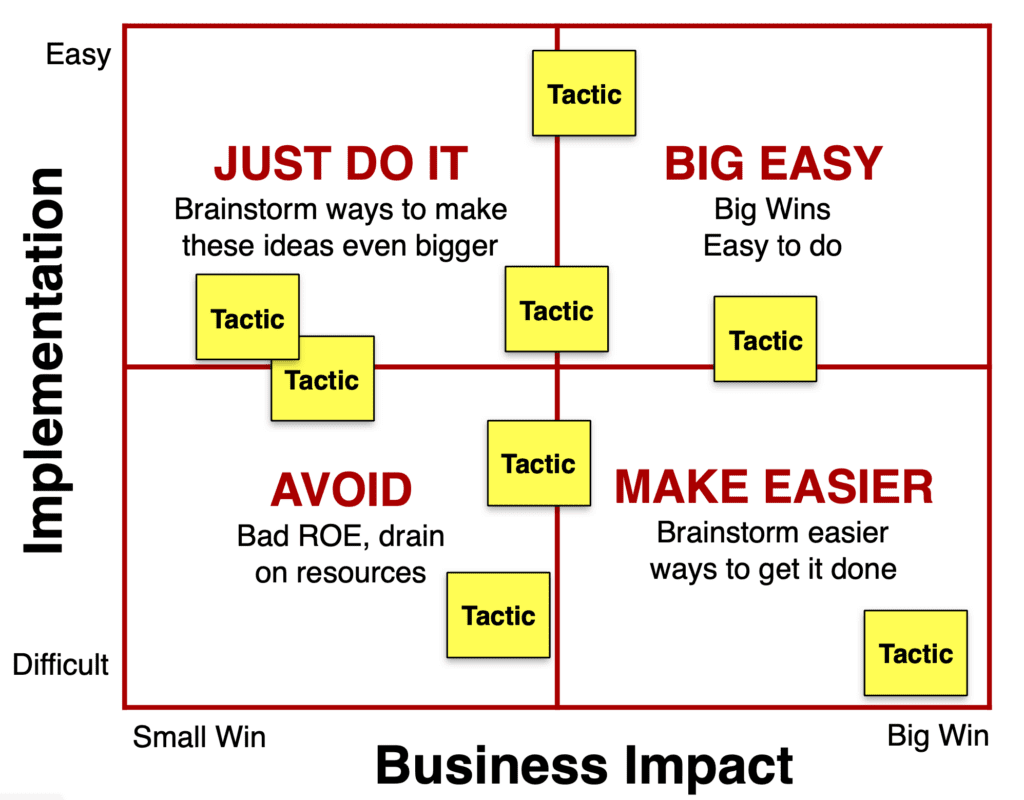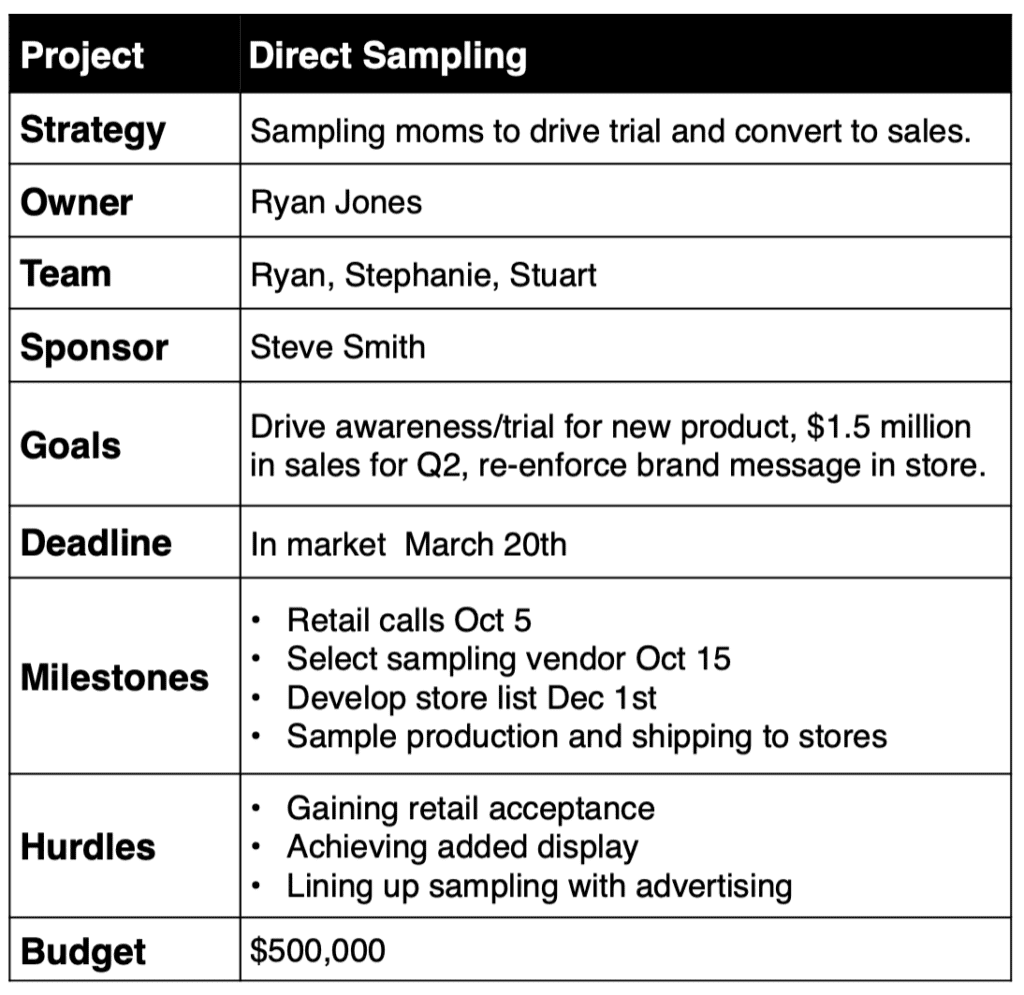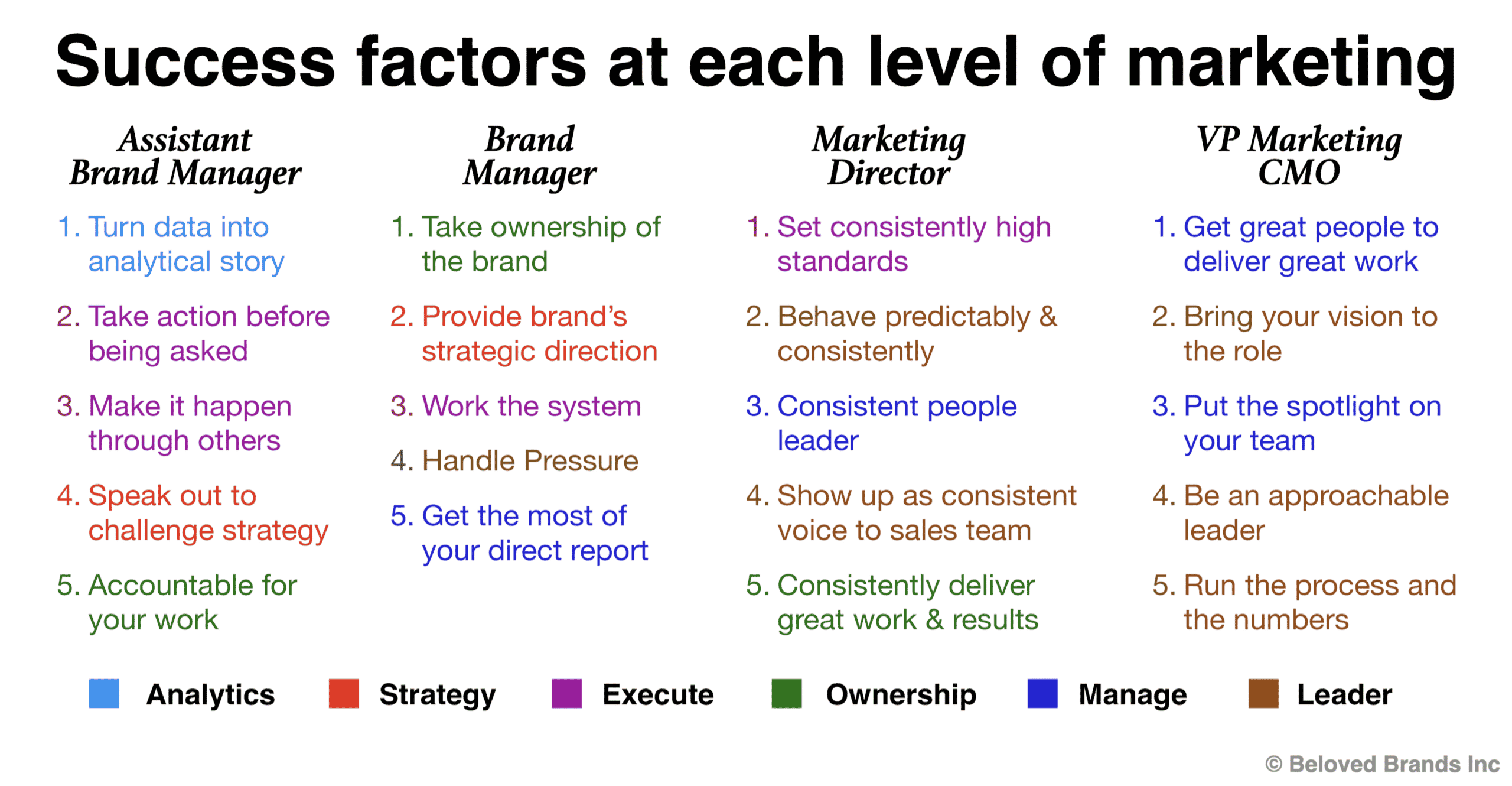Brainstorming should be a regular part of running your brand. To stay in a healthy creative space, I would suggest that each brand team should be having some brainstorm (big or small) once a month. They give you a constant influx of ideas–promotions, advertising, social media, naming, new products, events, PR, saving money and of course as part of your brand planning,
Brainstorms can be a quick 30 minutes as part of a weekly meeting to get some smart ideas or a whole afternoon to solve a problem that’s been nagging at the group. Or a team-building offsite meeting that goes all day.
Marketing teams should have regular brainstorm sessions
The team will stay fresh and open. Brand jobs can eat you up, forecasting, deadlines, reports can all make you stale. Having regular intervals of ideation helps to disrupt the workflow to motivate and engage the team.
Keep the best ideas near the surface.
At the end of a good brainstorm, you have some great ideas that bubble up, not all of which you can immediately use. These ideas tend to keep coming up, and that’s OK. Sometimes they are rejected because they are higher risk or resource-dependent. But after a few sessions of getting comfortable with these ideas, you might start to see new ways to make them do-able instead of focusing on why they can’t happen.
As the leader of the team, it sends the message that while we are strategic, we win by being more creative, faster, and better on execution.
It’s so easy to get stiffer as you move up the career ladder and be the one on the team finding fault with every idea. Just because you are starting to know right from wrong, doesn’t mean you need to crush every idea.
Having the brainstorming forum allows the newly experienced brand people the chance to bring ideas forward, and it sends the signal that you are an open leader, and you value the opinions of your junior staff.
Use a warm-up exercise to open people up
Every session should have a warm-up, to gets people out of the rut of the day-to-day, and opens up the brains. One that I’ve used is this innocent photo of the kids selling Lemonade (see photo below) and ask them to come up with as many ideas as they can to the question of “What ways can these two make more money?”
I offer a reward of cookies to the team with the most ideas and the best idea. In 5 minutes, teams should be able to list 50 or 100 ideas. Gets out of a lot of crap ideas, but it gets rid of them rejecting ideas before saying them. To get to 100, you have to listen to the group and build on someone’s idea. Eliminate the “yeah, but….” I get them to circle the top 3 ideas for each group, which forces them to get used to making decisions.
The best ideas are not your first ideas
One observation I’ll usually make is that the best ideas are typically found in the list beyond 20 or even beyond the 50 mark, emphasizing that you need 100 useful ideas to get to 5 great ideas.
Draw out the rule that “AVOID THE YEAH BUT…” because we have a process for ideation and one for making decisions. With a bunch of leaders in the room, you usually have to reassure them that they should trust the process. The alternative to the “yeah but” is building on the idea with “here’s a different take.”
Diverge, converge, diverge converge
Diverge #1
Divide the room up into groups of 5-7 people. I prefer to assign one leader who will be writing the ideas, pushing the group for more, throwing in some ideas of their own. A great way for the leader is to say, “here’s a crazy idea, who can build on this or make it better.” But if you catch the leader stalling, debating the ideas, then you should push that leader.
At this stage, you are pushing for the quantity, not quality. If you have multiple groups in the room, do a rotation where the leader stays put, and the group changes. I like having stations where each station has a unique problem to solve.
Possible stations for new product ideas
Product Extensions
- Identifies new consumer need states, occasions where your brand can easily handle.
- Broader portfolio helps neutralize competitive advantages or use to gain share of shelf.
- Continuous news keeps brand momentum going with new benefits, flavors, sizes.
Product Improvements
- Use the “leaky bucket” analysis to identify where you are losing consumers, helping isolate flaws and gaps in your brand that need fixing.
- Either moves ahead or catches up to competitors.
New Formats
- Stretches the brand into new subcategories/adjacencies or parts of the value chain.
- Helps drive added usage frequency or new usage occasions with consumers.
- Gets brand into new parts of the store, new distribution channels or new usage points with consumers.
Brand Stretching
- Take the assets of the brand and move them into other categories—bringing your loyal user base and brand reputation.
Game Changing Technology
- R&D driven invention needs to be matched up a consumer driven need and re-presented back to the consumer in a consumer centric idea.
Blue Ocean Exploratory Areas
- Completely exploratory ideas that combine your open technical capabilities, matched to pure un-explored consumer need states to create game changing launches that move into fully protected Island type competitive positions.
Converge #1
There are a few ways you can do this.
You can use voting dots where each person gets 5 or 10 dots. And they can use them any way they want. For random executional ideas, this is a great simple way.
If there are agreed-upon criteria, you can do some scoring against each criterion. High, medium, low.
If you are brainstorming product concepts or positioning statements, you might want to hold them up to the lens of how unique they are.
For naming, positioning, or promotions, the leader can look at all the ideas and begin grouping them into themes. They might start to discuss which themes seem to fit or are working the best, and use those themes for a second diverge.
For tactics to an annual plan, you can use a straightforward grid of Big vs. Small and Easy vs. Difficult. In this case, you want to find ways to land in THE BIG EASY. The reason you wish to easy is to ensure it has a good return on effort, believing effort and investment have a direct link.
To illustrate, click on the diagram to zoom in.
Diverge #2
The second diverge is where the magic happens. You’ve got the group in a good zone. They have seen which ideas are meeting the criteria. Take the list from Converge #1 and push it one more time. Make it competitive among the groups, with a $25 prize, so that people will push even harder.
- If you narrowed it to themes, then take each theme and push for more and better ideas under each of the themes
- When you looked at concepts or tactics, then choose the best 8-10 ideas and have groups work on them and flush them out entirely with a written concept, and come back and present them to the group.
- And, if using the grid above, then take the ideas in the big/difficult and brainstorm ways to make it easier. And if it’s small and easy, brainstorm ways to make it bigger.
Converge #2: Decisions
Once you’ve done the second diverge, you’ll be starting to see the ideas getting better and more focused. Now comes decision time.
Narrow down to a list of ideas to take forward into testing or discussion with senior management.
Rank the ideas based on a 12 or 24-month calendar.
You can vote using some of the techniques above using voting dots, or you can assign a panel of those who will vote. But you want to walk away from the meeting with a decision.
Beloved Brands playbook
Our Beloved Brands playbook goes in depth on everything you need to build a brand consumers will love. Learn to about strategic thinking, brand positioning, writing brand plans, advertising decisions, media planning, marketing analytics, and financials.

Our readers tell us they keep our Beloved Brands playbook close by for whenever they need to take on a new project. Clearly, we are thrilled that 89% of Amazon reviewers have given Beloved Brands a 5-star rating. Also, we wrote a B2B Brands playbook and a Healthcare Brands playbook.
Turn the ideas into projects
Trust that the process gets you into the right zone and make these ideas now a project. Once you have a decision on the best ideas, you want to use the energy and momentum in the room to make the ideas a reality:
- Assign an owner and support team.
- Get the team to agree upon goals, issues to resolve.
- Map out a timeline (milestones).
- Outline potential resource needs (budget, people, outside agencies).
To illustrate, click on the diagram to zoom in.
Marketing Careers
On a classic marketing team, there are four key levels:
- Assistant Brand Manager.
- Brand Manager.
- Marketing Director or Group Marketing Director.
- VP Marketing or CMO.
To illustrate, click to zoom in on the brand management career pathway.
At the Brand Manager level, it becomes about ownership and strategic thinking within your brand plan. Most Brand Managers are honestly a disaster with their first direct report, and get better around the fifth report.
When you get to the Marketing Director role, it becomes more about managing and leading than it does about thinking and doing. To be great, you need to motivate the greatness from your team and let your best players to do their absolute best.
And finally, at the CMO level, you must create your own vision, focus on your people to make them better and shine, drive the business results, and run the processes.
Our Beloved Brands Marketing Training program will make your team smarter.
If you are running a marketing team, you will always benefit from having a smarter team. When you invest in our marketing training program, you will help your team gain the marketing skills they need to succeed. As a result, you will see them make smarter decisions and produce exceptional work that drives business growth.
We’ll work with your team to help them learn more about the five core marketing skills: Strategic Thinking, Brand Positioning, Marketing Planning, Marketing Execution, and Brand Analytics. Most importantly, your marketers will learn new tools, concepts, and ideas to trigger new thinking. To help their skills, we get participants to take each tool on a test run. Then, we give feedback for them to keep improving.
To illustrate, click to zoom in on the brand management career pathway.
Strategic Thinking:
Our marketing training teaches brand leaders how to ask tough strategic questions to slow everyone down and engage in debate of options to move forward. To start, you will be given various tools to approach strategy in a thoughtful, analytical way. Importantly, marketers need learn how to change brain speeds to move from a strategic thinker style to uncover what is holding back a brand, and onto an instinctual thinker style on marketing execution.
We introduce our Strategic ThinkBox that allows marketers to interrogate their brand. Importantly, our ThinkBox pushes you to take a holistic look at the brand’s core strength, competitive landscape, tightness of the consumer bond, and business situation.
Brand Positioning:
Our brand positioning process teaches how to decide on the target market, consumer benefits, and reasons to believe. To start, you will learn to define the ideal consumer and frame the definition with their biggest needs, consumer insights and their enemy. Then, we provide our benefit cheatsheets to help learn how to discover the functional benefits and emotional benefits that a brand can deliver. Importantly, marketers need to make a decision on trying to stake out a unique space that is motivating to consumers, and ownable for the brand.
Learn to use our brand idea tool and see how it helps to communicate the brand idea to everyone across the organization. Finally, marketers will learn how to take the brand positioning work and translate it into a brand concept, brand story, and a brand credo.
Marketing Plans:
We see the marketing plan is a decision-making tool on how a brand will spend their limited resources. Moreover, the marketing plan communicates the expectations to everyone who works on the brand. Importantly, we teach marketers how to put together the vision, purpose, goals, key issues, strategies and marketing execution plans.
Learn how to write key issue questions and strategic statements that forms the foundation of the marketing plan. In addition, our marketing training provides various marketing planning templates including our one-page brand plan and ideal Marketing Plan presentation deck.
Marketing Execution:
Our marketing execution training starts with the concept of our Marketing PlayBox that matches up to the Strategic ThinkBox. To keep marketers on strategy throughout the execution stages, our Marketing PlayBox helps find in-the-box ideas that meet four dimensions: they are focused on our target, fit with the brand, deliver the message, and execute the strategy.
To start, we show how the creative brief sets up the PlayBox, serving as the bridge between the plan and execution. We go through the creative brief line-by line and give you examples of the best and worst. Importantly, you will learn to use our Creative Checklist to help make smarter decisions on creative communications. We workshop how to give feedback to your agency based on gaps you see with the checklist.
Learn to make media decisions that match up to your consumer’s purchase journey. In addition, we provide a similar Innovation Checklist to compare innovation ideas.
Brand Analytics:
Our comprehensive brand analytics training teach brand leaders how to lead a deep-dive business review. We outline the best analytical thinking so you can become a well-rounded marketer.
Learn to look at the marketplace, consumer analytics, channels of distribution, competitors or other brands in their industry. And, learn assess the brand itself. Importantly, you will learn how marketing funnels can help assess the brand’s performance. We provide 64 analytical questions that marketers can ask of their brand. Finally, we show how to understand the financial performance indicators of the brand.
Our training looks at three specific streams; Consumer Marketing Training, B2B Marketing Training, and Healthcare Marketing Training. With each program, all the of the examples are tailored to the type of marketer. Undoubtedly, we believe marketers will be at their best when the can see the concepts or tools working on their type of brand.
Take a look at our Marketing Skills assessment tool to see how you or your marketing team measure up.
For more information on our Beloved Brands Marketing Training programs, click below or email Graham Robertson at Graham@beloved-brands.com















